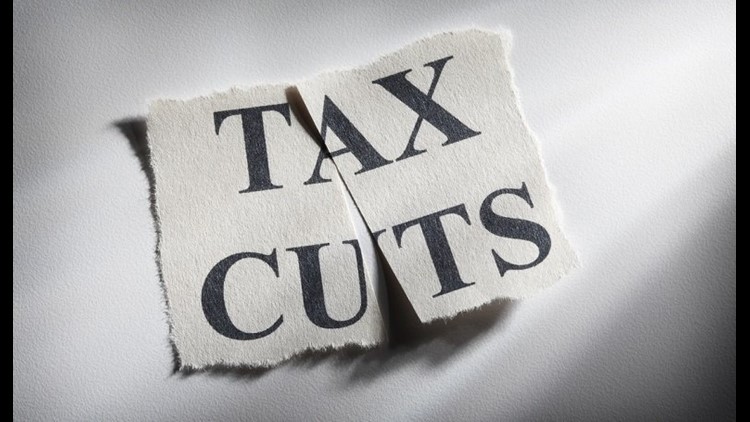DES MOINES, Iowa (AP) — Iowa is on the verge of implementing sweeping income tax cuts that will have long-lasting effects felt in every corner of the state.
Legislation was sent to Republican Gov. Kim Reynolds, who is campaigning for election on tax cuts and is expected to sign the bill.
The cuts would funnel money to the highest-earning Iowans and give a boost to businesses, but most Iowans would see a share of the savings. The cuts are expected to lead to future contentious budget battles in the Iowa Legislature.
Here’s a closer look at what the tax cuts mean to Iowans:
WHEN DO CUTS START?
The legislation phases in tax changes over several years, but most people would see benefits in two phases. State revenue targets must be met before the second phase, which would happen no earlier than 2023.
The initial income tax cuts will begin in 2019, although some benefits, such as allowing teachers to deduct classroom purchases, will go into effect this year.
About two-thirds of next year’s income tax savings will come in the form of larger paychecks, as withholding rates are reduced, according to an analysis of the tax bill by the Iowa Department of Revenue.
The rest of the savings will come from larger refunds, or lower tax bills, and so may not end up in bank accounts until April 2020. About 4 percent of people will see their taxes increase.
The second phase of cuts would increase Iowa’s standard deduction and make filing a state tax return easier. Those cuts would be delayed if Iowa’s tax revenues don’t grow at the required rate.
WHO WILL BENEFIT?
Most middle-class families in Iowa will see a tax cut, but the largest share of the benefits go to the wealthy.
A typical family would save enough to pay for a weekly trip to Starbucks for a grande latte. (That married family of four making $48,000 would receive a 10 percent cut worth about $184 a year.)
On average, middle-class families — those making between $30,000 and $100,000 a year — will see tax savings between $86 and $257 next year, based on an analysis by the Department of Revenue. About 93 percent of all middle-class households would see some savings.
Those middle-class households will receive about a quarter of next year’s tax savings, compared to more than 40 percent that goes to the top 4 percent of taxpayers.
About 9,400 Iowans with annual incomes in excess of $1 million will receive more than $62 million in savings, about 15 percent of the total. Half of all Iowa households — those earning up to $40,000 a year — will receive about 7 percent of the 2019 cuts.
In total, about three-fourths of all Iowans would see some sort of tax cut.
Businesses will benefit from deductions for expenses and income, while corporate tax rates are scheduled to be cut in 2021 regardless of economic conditions.
BUDGETS GET SQUEEZED
The state government will bring in about $2.1 billion less over the next six years because of the tax cuts, adding potential stress to tight budgets after back-to-back mid-year spending cuts.
After income and business tax changes are implemented in 2021, the nonpartisan Legislative Services Agency estimates state revenue would be reduced by about 4 percent. That doesn’t mean the state won’t have new money, but there will be less available when writing budgets.
Republicans say they’ve left enough money to pay for their priorities and have set aside some funding in case of a downturn. Democrats say bringing in less revenue will translate to bigger cuts to state services.
This year’s budget left many area funded at lower levels than in past years. The state’s three public universities, for example, received less new money for the upcoming budget year than they saw cut from this year’s budget.
Average tuition at the universities has gone up more than 3 percent annually in the past decade, with students in certain programs seeing even higher increases. Iowa’s community colleges also have ratcheted up their tuition as state funding has diminished.
SALES TAXES EXPANDED
In addition to squeezing state agencies, Democrats warn that new sales taxes will hurt many lower-income families.
The legislation creates new sales taxes on digital goods like e-books and movie downloads, digital subscription services such as Apple Music and Netflix, ride-sharing apps and goods purchased online.
The Department of Revenue estimates more than $867 million in new taxes will be collected over the next six years. That represents about a 5 percent increase in overall sales taxes collected.
However, the state’s ability to collect some of the new taxes on digital sales hinges on the outcome of a case before the U.S. Supreme Court. Some online retailers, such as Amazon, already collect Iowa sales tax.
Democrats say some families could end up paying more in new sales taxes than they save on income taxes. That would depend on household income and how much they purchase online.
For example, a single parent with two children earning $24,000 would receive an estimated income tax cut of $58 — that’s the same as Iowa sales tax on about $975 in online purchases and subscriptions.



